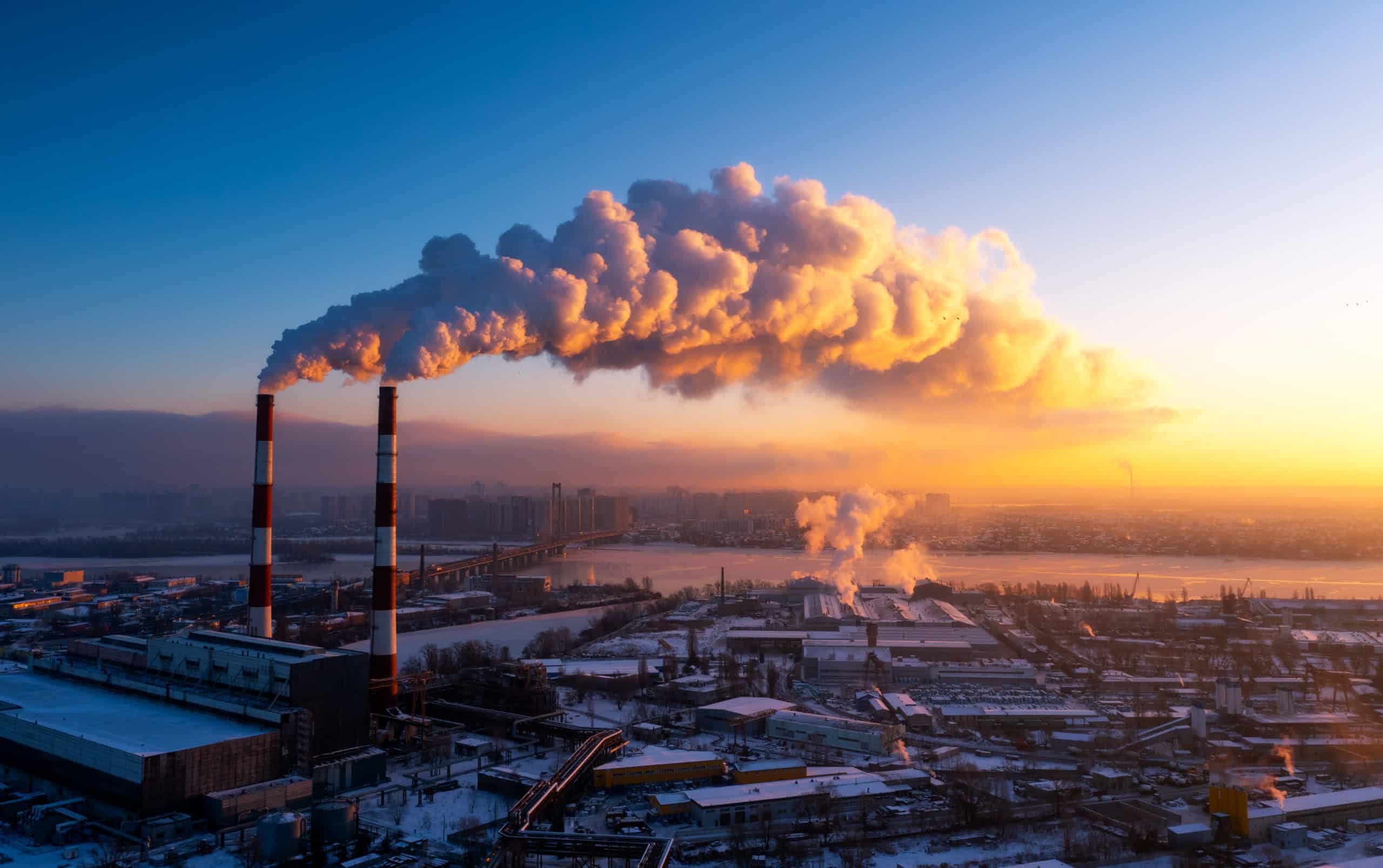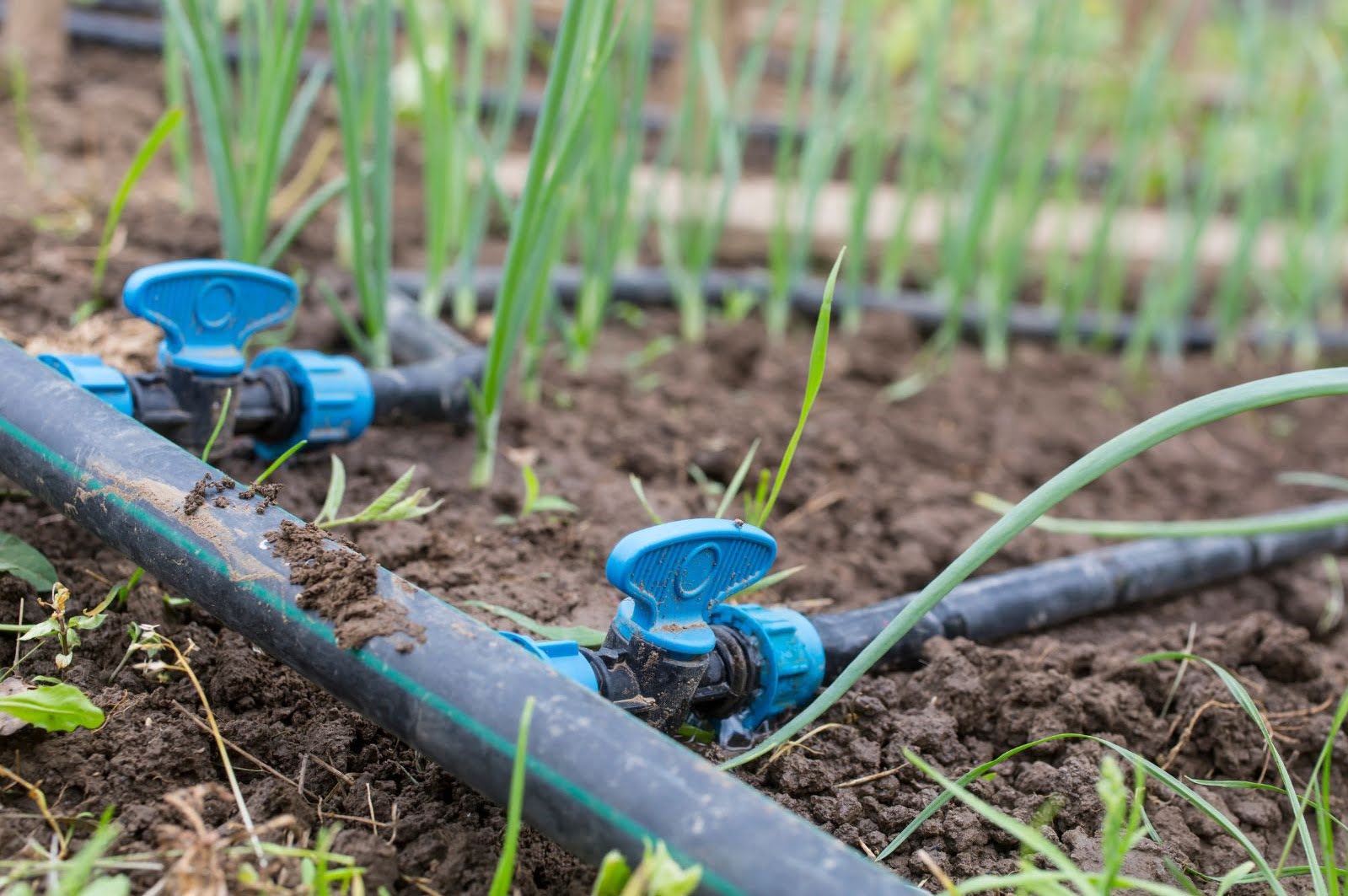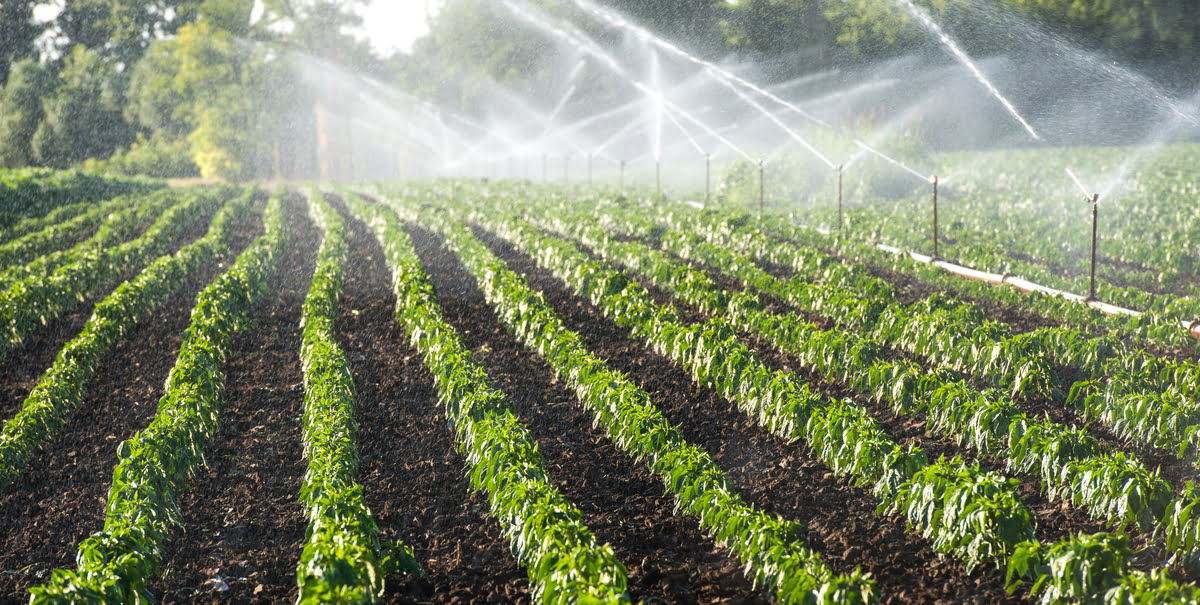Home>Gardening News and Trends>How Do Greenhouse Gasses Work


Gardening News and Trends
How Do Greenhouse Gasses Work
Modified: January 22, 2024
Discover the latest news on how greenhouse gases work, their impact on climate change, and key measures to reduce their emissions. Stay informed and make a positive impact!
(Many of the links in this article redirect to a specific reviewed product. Your purchase of these products through affiliate links helps to generate commission for Chicagolandgardening.com, at no extra cost. Learn more)
Table of Contents
- Introduction
- Definition of Greenhouse Gases
- Overview of the Greenhouse Effect
- Role of Greenhouse Gases in the Atmosphere
- Major Greenhouse Gases
- Carbon Dioxide (CO2)
- Methane (CH4)
- Nitrous Oxide (N2O)
- Fluorinated Gases
- Sources of Greenhouse Gas Emissions
- Human Activities and Greenhouse Gas Emissions
- Impacts of Greenhouse Gases on Climate Change
- Mitigation Strategies for Greenhouse Gas Emissions
- Conclusion
Introduction
Welcome to the world of greenhouse gases – an essential topic for understanding climate change and its impacts on our planet. Our Earth’s atmosphere is composed of various gases that help regulate its temperature and climate. Among these gases are greenhouse gases, which play a significant role in maintaining the balance of heat and energy on Earth.
Greenhouse gases are named after their similarity to the way a greenhouse operates. Just like a greenhouse traps heat from the sun to keep the plants warm, these gases in our atmosphere trap heat from the sun, leading to what is known as the greenhouse effect. However, the greenhouse effect can become imbalanced due to the increased concentration of greenhouse gases, leading to a phenomenon known as global warming.
In this article, we will explore the concept of greenhouse gases, their role in the atmosphere, the major types of greenhouse gases, their sources, and the impacts they have on our climate. We will also discuss strategies for mitigating greenhouse gas emissions, as we strive to find sustainable solutions for a healthier planet.
The knowledge of greenhouse gases is crucial not only for scientists but also for individuals, businesses, and policymakers as we work collectively to address climate change. Understanding the mechanisms and impacts of greenhouse gases will enable us to make informed choices and take actions that promote a sustainable and resilient future.
So, let us dive into the captivating world of greenhouse gases and explore the intricate relationship they have with our climate and environment!
Definition of Greenhouse Gases
Before delving into the specifics of greenhouse gases, let’s first understand their definition. Greenhouse gases are gases present in the Earth’s atmosphere that have the ability to trap and retain heat from the sun. These gases act like a blanket, insulating the Earth and regulating its temperature.
Essentially, greenhouse gases allow sunlight to enter the Earth’s atmosphere, but they prevent some of the heat from escaping back into space. This process is essential for maintaining the Earth’s temperature within a habitable range and supporting life as we know it.
Some of the major greenhouse gases include carbon dioxide (CO2), methane (CH4), nitrous oxide (N2O), and fluorinated gases. These gases are naturally present in the atmosphere, but their concentrations have dramatically increased due to human activities over the past century.
It’s important to note that not all gases in the atmosphere are greenhouse gases. Greenhouse gases have the specific property of absorbing and emitting infrared radiation, which is heat energy. This property enables them to trap heat within the Earth’s atmosphere, leading to the greenhouse effect.
The greenhouse effect is a natural process that has been occurring on Earth for millions of years. Without greenhouse gases, the Earth’s average temperature would be significantly colder, making it inhospitable for life as we know it. However, human activities, particularly the burning of fossil fuels and deforestation, have significantly increased the concentrations of greenhouse gases in the atmosphere, causing the Earth to warm at an alarming rate.
Understanding the definition of greenhouse gases and their role in the Earth’s climate system is crucial for comprehending the impacts of human activities on our environment. By gaining a clear understanding of greenhouse gases, we can develop informed strategies to mitigate their effects and work towards a more sustainable future.
Overview of the Greenhouse Effect
The greenhouse effect is a natural phenomenon that occurs when certain gases in the Earth’s atmosphere trap heat from the sun, leading to a rise in temperature on the planet’s surface. It is this effect that makes Earth habitable, as it maintains an average temperature suitable for supporting life.
The greenhouse effect works like this: When sunlight reaches the Earth’s surface, some of it is reflected back into space, while the rest is absorbed by land, oceans, and the atmosphere. As the Earth’s surface warms, it radiates thermal energy in the form of infrared radiation.
Greenhouse gases in the atmosphere, such as carbon dioxide, methane, and water vapor, absorb a portion of the infrared radiation and re-emit it in all directions, including back toward the Earth’s surface. This process effectively traps heat, preventing it from escaping into space and causing a warming effect known as the greenhouse effect.
Without the greenhouse effect, the Earth’s average surface temperature would drop to around -18°C (0°F), rendering the planet too cold to support life as we know it. The greenhouse effect is vital for maintaining a hospitable climate and allows for the existence of diverse ecosystems.
However, human activities, particularly the burning of fossil fuels and deforestation, have significantly increased the concentration of greenhouse gases in the atmosphere. This excess of greenhouse gases leads to an enhanced greenhouse effect, causing the Earth’s temperature to rise at an alarming rate. This phenomenon is commonly known as global warming.
Global warming has far-reaching impacts and can result in a variety of detrimental effects, such as rising sea levels, extreme weather events, shifts in precipitation patterns, and the disruption of ecosystems and biodiversity. Understanding the workings of the greenhouse effect is crucial for comprehending the factors contributing to climate change and developing strategies to mitigate its effects.
In summary, the greenhouse effect is a natural process that helps regulate the Earth’s temperature and maintain a habitable climate. However, human activities have intensified this effect by increasing the concentration of greenhouse gases, leading to global warming and its associated impacts. By understanding the mechanisms of the greenhouse effect, we can take steps to reduce greenhouse gas emissions and work towards a sustainable future.
Role of Greenhouse Gases in the Atmosphere
Greenhouse gases play a crucial role in regulating the Earth’s temperature and maintaining a stable climate. They act as a natural “blanket” in the atmosphere, trapping heat from the sun and preventing it from escaping back into space. Without greenhouse gases, Earth would be a much colder and inhospitable place.
When sunlight reaches the Earth’s surface, it warms the land, oceans, and atmosphere. The Earth then radiates this heat in the form of infrared radiation. Greenhouse gases, such as carbon dioxide (CO2), methane (CH4), and nitrous oxide (N2O), have the unique property of absorbing and re-emitting this infrared radiation.
This absorption and re-emission process allows greenhouse gases to trap heat within the atmosphere, thus creating the greenhouse effect. By enhancing the greenhouse effect, they help regulate the Earth’s temperature, making it suitable for supporting life as we know it. In other words, without greenhouse gases, the Earth’s surface would be significantly colder, making it uninhabitable for human beings and most other organisms.
Water vapor is also a potent greenhouse gas and is the most abundant in the atmosphere. While its concentration varies greatly depending on location and weather conditions, it acts as a positive feedback mechanism. When the Earth warms, more water evaporates, increasing the amount of water vapor in the atmosphere. This, in turn, amplifies the greenhouse effect, leading to even higher temperatures.
However, the role of greenhouse gases in the atmosphere is a delicate balance. While they are essential for maintaining a habitable climate, an excess of greenhouse gases can lead to an imbalance in the Earth’s energy budget and contribute to global warming.
Due to human activities, such as the burning of fossil fuels, deforestation, and industrial processes, concentrations of greenhouse gases in the atmosphere have been rapidly increasing since the Industrial Revolution. This excess of greenhouse gases traps more heat, contributing to the phenomenon of anthropogenic climate change.
Understanding the role of greenhouse gases in the atmosphere is crucial for comprehending the causes and mechanisms of climate change. By recognizing their impact, we can develop effective strategies to mitigate greenhouse gas emissions and work towards a more sustainable and resilient future.
Major Greenhouse Gases
Several gases contribute to the greenhouse effect, but there are a few major greenhouse gases that have the most significant impact on our climate system. These gases include carbon dioxide (CO2), methane (CH4), nitrous oxide (N2O), and fluorinated gases.
1. Carbon Dioxide (CO2): Carbon dioxide is the most well-known greenhouse gas and is primarily released through the combustion of fossil fuels, such as coal, oil, and natural gas. Land-use changes, such as deforestation and forest degradation, also contribute to increased CO2 levels. Carbon dioxide is responsible for over 60% of the warming effect caused by human activities since the Industrial Revolution.
2. Methane (CH4): Methane is a potent greenhouse gas that is released from a variety of sources. Natural sources include wetlands, termites, and wildfires, while human activities produce methane through activities such as agriculture (e.g., livestock and rice cultivation), coal mining, and the extraction and transportation of fossil fuels. Although methane has a shorter lifespan in the atmosphere compared to carbon dioxide, it is around 25 times more effective at trapping heat over a 100-year period.
3. Nitrous Oxide (N2O): Nitrous oxide is mainly emitted through agricultural and industrial activities, as well as the burning of fossil fuels and solid waste. It is released from the use of synthetic and organic fertilizers, biomass burning, and the combustion of fossil fuels in industrial processes. Nitrous oxide has a long atmospheric lifespan and is about 300 times more effective at trapping heat compared to carbon dioxide.
4. Fluorinated Gases: Fluorinated gases encompass a group of synthetic gases that are used in various industrial applications, such as air conditioning, refrigeration, and electronics manufacturing. These gases have extremely high global warming potentials and can persist in the atmosphere for a long time. While they contribute to a relatively small percentage of total greenhouse gas emissions, their impact on climate change is significant.
Understanding the major greenhouse gases allows us to focus our efforts on reducing their emissions and mitigating climate change. It’s important to note that their global warming potentials vary, meaning some gases have a stronger heat-trapping effect than others.
Efforts to combat climate change often prioritize reducing carbon dioxide emissions due to its high concentration and long lifespan. However, addressing methane and nitrous oxide emissions is also crucial for effective climate change mitigation, as they have significant short-term warming effects.
By implementing sustainable practices, transitioning to renewable energy sources, improving agricultural techniques, and adopting cleaner technologies, we can work towards reducing the emissions of these major greenhouse gases and mitigating the impacts of climate change.
Carbon Dioxide (CO2)
Carbon dioxide (CO2) is one of the most prominent greenhouse gases and plays a significant role in climate change. It is released into the atmosphere through natural processes like volcanic eruptions and respiration, as well as human activities like burning fossil fuels and deforestation.
Sources of Carbon Dioxide: The primary source of carbon dioxide emissions is the combustion of fossil fuels, including coal, oil, and natural gas, for electricity generation, transportation, and industrial processes. The burning of biomass, such as wood and agricultural waste, also contributes to CO2 emissions. Additionally, deforestation and land-use changes disrupt the carbon cycle by reducing the Earth’s capacity to absorb CO2 through photosynthesis.
Concentration and Longevity: Carbon dioxide is by far the most abundant long-lived greenhouse gas in the atmosphere. Its concentration has increased dramatically since the Industrial Revolution, primarily driven by human activities. While carbon dioxide accounts for a relatively small percentage of the Earth’s atmosphere (around 0.04%), its long atmospheric lifespan, lasting for centuries, allows it to accumulate and contribute to the greenhouse effect.
Climate Impact: Carbon dioxide is responsible for approximately 85% of total greenhouse gas emissions caused by human activities. Its ability to absorb and re-emit heat contributes significantly to global warming. The increased accumulation of carbon dioxide in the atmosphere leads to the intensification of the greenhouse effect, resulting in rising global temperatures and associated climate changes.
Consequences of High CO2 Levels: Elevated carbon dioxide levels have various consequences on our environment and climate. They contribute to the melting of glaciers and ice caps, leading to rising sea levels. Greater CO2 concentrations in the atmosphere can also alter weather patterns, intensify extreme weather events, disrupt ecosystems, and impact agricultural productivity and food security. Moreover, the absorption of excess carbon dioxide by the oceans leads to ocean acidification, posing significant threats to marine life and coral reefs.
Efforts to Reduce CO2 Emissions: To mitigate the impacts of carbon dioxide emissions, it is essential to reduce their production and enhance carbon sequestration. Renewable energy sources, such as solar and wind power, can replace fossil fuels for electricity generation, significantly reducing CO2 emissions. Energy efficiency measures, sustainable transportation systems, and promoting forest preservation and reforestation also play critical roles in curbing CO2 emissions.
Addressing carbon dioxide emissions is a key aspect of global climate change mitigation strategies. By transitioning towards a low-carbon economy and adopting sustainable practices, we can work towards reducing the concentration of CO2 in the atmosphere and mitigating the impacts of climate change.
Methane (CH4)
Methane (CH4) is a potent greenhouse gas that is second only to carbon dioxide in terms of its impact on climate change. It is released into the atmosphere through both natural processes and human activities, with sources ranging from wetlands and termites to energy production and agricultural practices.
Sources of Methane Emissions: Methane is emitted naturally from various sources, such as wetlands, where it is produced during the decomposition of organic matter in oxygen-deprived environments. Additionally, methane is released by termites, as they digest and break down wood. On the human front, activities like the production and transport of coal, oil, and natural gas; livestock farming, particularly through enteric fermentation and manure management; and the decay of organic waste in landfills contribute to the emission of methane.
Concentration and Potency: While methane accounts for a relatively small proportion of greenhouse gases in the atmosphere (around 16%), its warming potential is significantly higher than carbon dioxide. Over a 20-year period, methane has about 84 times the heat-trapping capability of carbon dioxide, although its lifespan in the atmosphere is shorter. The potency of methane underscores its importance in climate change mitigation efforts.
Climate Impact: The increasing concentration of methane in the atmosphere contributes to global warming and climate change. Methane is particularly effective at trapping heat in the lower atmosphere, known as the troposphere. Higher temperatures can accelerate the melting of polar ice and permafrost, potentially releasing trapped methane and creating a feedback loop that further intensifies global warming.
Impacts Beyond Climate Change: Methane emissions not only impact climate change but also have other consequences for the environment and human health. Methane can contribute to air pollution, as it reacts with other pollutants to form ground-level ozone, a harmful component of smog. Methane emissions from landfills and agriculture can also contribute to odor and affect local air quality. Additionally, methane is a highly flammable gas, posing potential safety risks in confined spaces or areas with high concentrations.
Efforts to Reduce Methane Emissions: Reducing methane emissions is a crucial aspect of mitigating climate change. Strategies to decrease methane emissions include improving agricultural practices like livestock management, reducing methane leakage from oil and gas systems, minimizing methane emissions from landfills through proper waste management and capturing methane for energy production, and addressing methane release from coal mining. Methane emissions can be reduced through the adoption of sustainable agricultural practices, improved waste management systems, and the implementation of technologies that capture and utilize methane.
Addressing methane emissions is crucial for effective climate change mitigation. Combining efforts to reduce carbon dioxide emissions with targeted strategies to minimize methane emissions can bring us closer to achieving a more sustainable and resilient future.
Nitrous Oxide (N2O)
Nitrous oxide (N2O) is a potent greenhouse gas that contributes to climate change. While it occurs naturally in the atmosphere, human activities have significantly increased its concentration, primarily through agricultural practices and industrial processes.
Sources of Nitrous Oxide Emissions: Nitrous oxide is released into the atmosphere through both natural and human sources. Natural sources include soil microbial activity, such as the breakdown of organic matter and the nitrogen cycle in soils and oceans. Human activities contribute to the majority of nitrous oxide emissions through agricultural practices, such as the use of synthetic and organic fertilizers, animal waste management, and the burning of agricultural residues. Industrial activities, combustion of fossil fuels, and the incineration of solid waste also release nitrous oxide.
Concentration and Warming Potential: Nitrous oxide is present in the atmosphere at much lower concentrations compared to carbon dioxide and methane. However, it is a highly potent greenhouse gas, with a warming potential approximately 300 times that of carbon dioxide over a 100-year period. Nitrous oxide has a relatively long lifespan in the atmosphere compared to methane, contributing to its cumulative effects on global warming.
Climate Impact: The accumulation of nitrous oxide in the atmosphere contributes to the greenhouse effect, leading to higher temperatures and climate change. Additionally, nitrous oxide plays a role in the destruction of stratospheric ozone, contributing to ozone depletion and the thinning of the ozone layer. This, in turn, affects the protection of life on Earth from harmful ultraviolet radiation.
Impacts Beyond Climate Change: Nitrous oxide emissions not only affect the climate but also have implications for air quality and human health. In scenarios where nitrous oxide reacts with other pollutants in the atmosphere, it can contribute to the formation of smog and acid rain, which can harm ecosystems and human respiratory health.
Efforts to Reduce Nitrous Oxide Emissions: Reducing nitrous oxide emissions is vital for effective climate change mitigation and maintaining a healthy environment. Sustainable agricultural practices, such as precision nutrient management, optimizing fertilizer application, and reducing nitrogen inputs, can help minimize nitrogen losses and subsequently reduce nitrous oxide emissions. Improved waste management and wastewater treatment systems can also help reduce nitrous oxide emissions stemming from organic waste decomposition. In industrial processes, adopting cleaner technologies and promoting energy efficiency can contribute to lower nitrous oxide emissions.
Addressing nitrous oxide emissions is crucial for comprehensive climate change mitigation strategies. By adopting sustainable practices, improving nitrogen management, and implementing technologies that minimize nitrous oxide release, we can work towards reducing the impact of this potent greenhouse gas on the environment and human health.
Fluorinated Gases
Fluorinated gases are a group of synthetic gases that are used in various industrial applications. These gases, including hydrofluorocarbons (HFCs), perfluorocarbons (PFCs), and sulfur hexafluoride (SF6), have a high global warming potential and can persist in the atmosphere for long periods, contributing to climate change.
Sources of Fluorinated Gas Emissions: Fluorinated gases are primarily created through industrial processes, such as the manufacturing of foam-blowing agents, refrigerants, and aerosols. HFCs, which are commonly used as alternatives to ozone-depleting substances, are found in air conditioning, refrigeration systems, and in the production of foam insulation. PFCs are produced predominantly as byproducts of aluminum production and the manufacturing of certain electronics. SF6 is used in high-voltage electrical equipment, such as circuit breakers and transformers.
High Global Warming Potential: Fluorinated gases have an exceptionally high global warming potential compared to other greenhouse gases. For example, some types of HFCs can have global warming potentials thousands of times greater than that of carbon dioxide. This high potency, combined with their long atmospheric lifetimes, contributes to their significant impact on climate change.
Climate Impact: Fluorinated gases, even in relatively small quantities, have a considerable warming effect on the Earth’s climate. Their ability to absorb infrared radiation and trap heat in the atmosphere makes them powerful contributors to the greenhouse effect. Although these gases have lower atmospheric concentrations than carbon dioxide, methane, and nitrous oxide, their impact is substantial due to their high global warming potentials.
Efforts to Reduce Fluorinated Gas Emissions: Recognizing the significant contribution of fluorinated gases to climate change, international efforts have been made to phase out their production and use. The Kigali Amendment to the Montreal Protocol, which went into effect in 2019, aims to phase down the production and consumption of HFCs globally. This agreement promotes the use of low-global warming potential alternatives and encourages the development of more sustainable technologies.
It is crucial for industries and individuals to transition away from the use of fluorinated gases by adopting climate-friendly alternatives. This includes the development and implementation of more energy-efficient systems, improving recycling and recovery practices, and exploring cleaner technologies. By reducing the emissions of fluorinated gases, we can significantly contribute to the mitigation of climate change and create a more sustainable future.
Sources of Greenhouse Gas Emissions
Greenhouse gas emissions are a result of various natural and human activities. Understanding the sources of these emissions is crucial for identifying areas where targeted actions can be taken to mitigate their effects and reduce our impact on climate change.
Natural Sources: Natural sources of greenhouse gas emissions include processes that occur in nature without direct human intervention. These sources include volcanic eruptions, wildfires, and the decomposition of organic matter in wetlands. While these emissions are considered natural, they still contribute to the overall greenhouse gas levels in the atmosphere.
Human Activities: Human activities are the primary contributors to the increase in greenhouse gas emissions over the past century. These activities include:
- Energy Production: The burning of fossil fuels for electricity generation, heating, and transportation is a significant source of greenhouse gas emissions. Power plants, factories, and vehicles powered by coal, oil, and natural gas release carbon dioxide (CO2) into the atmosphere.
- Deforestation and Land Use Changes: The clearance of forests for agriculture, logging, or urbanization contributes to greenhouse gas emissions. Trees store carbon dioxide, so when forests are cleared or burned, the stored carbon is released, leading to increased atmospheric CO2 levels.
- Agriculture: Agricultural activities, particularly livestock farming, produce significant amounts of methane (CH4) and nitrous oxide (N2O). Livestock digestion, manure management, and rice cultivation all generate methane emissions. The use of fertilizers and the management of agricultural soils contribute to nitrous oxide emissions.
- Industrial Processes: Various industrial sectors, such as cement production, steel manufacturing, and chemical production, emit greenhouse gases. These processes release carbon dioxide, methane, and nitrous oxide as byproducts of chemical reactions.
- Waste Management: Improper waste management, including the decomposition of organic waste in landfills, generates methane emissions. Waste treatment facilities, such as wastewater treatment plants, can also produce methane and nitrous oxide.
It’s important to note that the contribution of each source of greenhouse gas emissions may vary across countries and regions. Factors such as population density, energy consumption patterns, transportation systems, and agricultural practices influence the specific sources and levels of emissions in a given area.
Recognizing the sources of greenhouse gas emissions is crucial for developing effective mitigation strategies. By transitioning to renewable energy sources, implementing energy-efficient technologies, promoting sustainable land use practices, and improving waste management systems, we can significantly reduce our greenhouse gas emissions and work towards a more sustainable future.
Human Activities and Greenhouse Gas Emissions
Human activities play a central role in the increase of greenhouse gas emissions, driving climate change and its associated impacts. Over the past century, the burning of fossil fuels, deforestation, and changes in land use have significantly contributed to the rise in greenhouse gas concentrations in the atmosphere.
Burning of Fossil Fuels: One of the largest sources of greenhouse gas emissions is the burning of fossil fuels for energy production, transportation, and industrial processes. The combustion of coal, oil, and natural gas releases carbon dioxide (CO2) into the atmosphere. Carbon dioxide emissions from fossil fuel combustion account for the majority of global greenhouse gas emissions.
Deforestation and Land Use Changes: The clearing of forests for agriculture, logging, and urbanization has had a substantial impact on greenhouse gas emissions. Forests act as carbon sinks, absorbing carbon dioxide through photosynthesis. When forests are destroyed, the stored carbon is released back into the atmosphere as CO2. Deforestation and land use changes contribute to approximately 10% of global greenhouse gas emissions.
Agricultural Activities: Agricultural practices, particularly livestock farming, contribute significantly to greenhouse gas emissions. Methane (CH4) is released from livestock digestion and the management of animal waste. Nitrous oxide (N2O) emissions come from the use of synthetic and organic fertilizers and the management of agricultural soils. Livestock production alone accounts for around 14.5% of global greenhouse gas emissions.
Industrial Processes: Industrial activities, including cement production, steel manufacturing, and chemical processes, emit greenhouse gases as byproducts. Carbon dioxide, methane, and nitrous oxide are released during these industrial processes, contributing to the overall greenhouse gas levels. Industrial processes account for approximately 21% of global greenhouse gas emissions.
Waste Management: Improper waste management, particularly the decomposition of organic waste in landfills, produces methane emissions. Waste treatment facilities, such as wastewater treatment plants, also generate methane (CH4) and nitrous oxide (N2O). Effective waste management systems and strategies can help minimize these emissions.
Human activities are the primary drivers of greenhouse gas emissions, leading to climate change and its associated impacts. The increasing concentration of greenhouse gases in the atmosphere traps more heat, causing global temperatures to rise. This warming trend has far-reaching consequences, including rising sea levels, changing weather patterns, more frequent and severe extreme weather events, and impacts on ecosystems and biodiversity.
Recognizing the role of human activities in greenhouse gas emissions is essential for taking meaningful action to mitigate climate change. By transitioning to renewable energy sources, improving energy efficiency, adopting sustainable land use practices, promoting responsible agricultural methods, and implementing effective waste management systems, we can reduce greenhouse gas emissions and work towards a more sustainable and resilient future.
Impacts of Greenhouse Gases on Climate Change
The increasing levels of greenhouse gases in the Earth’s atmosphere have significant impacts on climate change and the overall health of our planet. These gases, such as carbon dioxide (CO2), methane (CH4), and nitrous oxide (N2O), trap heat in the atmosphere, leading to a range of detrimental effects.
Rising Temperatures: The primary impact of greenhouse gases is the elevation of global temperatures. As these gases accumulate, they trap more heat within the Earth’s atmosphere, causing the planet to warm. This rise in temperatures leads to widespread consequences across various facets of the Earth’s climate system.
Changes in Weather Patterns: The presence of greenhouse gases alters weather patterns, resulting in shifts in precipitation, intensity and frequency of extreme weather events, and changes in regional climates. Warmer temperatures can lead to more severe and prolonged droughts, increased rainfall intensity, and an increased risk of heatwaves and wildfires.
Rising Sea Levels: Melting glaciers and ice caps, coupled with the expansion of seawater as it warms, contribute to rising sea levels. Increased greenhouse gas emissions accelerate the melting of polar ice, and this additional water enters the oceans. Rising sea levels pose a significant threat to coastal communities, freshwater supplies, and ecosystems, leading to increased flooding and erosion.
Impact on Ecosystems and Biodiversity: Climate change caused by greenhouse gas emissions poses risks to ecosystems and biodiversity. Many species may struggle to adapt to changing climatic conditions, leading to altered migration patterns, disruptions in food chains, and extinction risks. Coral reefs, essential for marine ecosystems and coastal protection, are particularly vulnerable to warming ocean temperatures.
Ocean Acidification: The excessive absorption of carbon dioxide by the oceans leads to ocean acidification. Increased CO2 levels in the water result in reduced pH levels, affecting marine life, especially creatures with calcium carbonate shells or structures, such as coral reefs and shellfish. This acidification undermines the health and stability of marine ecosystems and impacts fisheries and food security.
Feedback Loops and Tipping Points: Greenhouse gas emissions may trigger feedback mechanisms that further exacerbate climate change. For example, the melting of the polar ice caps releases more methane, a potent greenhouse gas, further enhancing global warming. As temperatures rise, permafrost thaw releases stored carbon, amplifying the greenhouse effect. Additionally, crossing tipping points, such as the irreversible collapse of polar ice sheets, could lead to abrupt and irreversible changes in climate patterns.
It is crucial to recognize the impacts of greenhouse gases on climate change in order to take effective action and mitigate these effects. By reducing greenhouse gas emissions, transitioning to renewable energy sources, implementing sustainable land and water management practices, and preserving natural ecosystems, we can work towards mitigating the impacts of climate change and ensuring a more sustainable and resilient future.
Mitigation Strategies for Greenhouse Gas Emissions
Addressing greenhouse gas emissions is crucial for mitigating climate change and working towards a more sustainable future. Implementing effective mitigation strategies can help reduce the concentration of greenhouse gases in the atmosphere and minimize the impacts of climate change. Here are some key mitigation strategies:
Transition to Renewable Energy: Shifting from fossil fuel-based energy sources to renewable energy is a crucial step in reducing greenhouse gas emissions. Investing in solar, wind, hydropower, and other renewable energy technologies can significantly decrease carbon dioxide (CO2) emissions from the electricity sector. Furthermore, accelerating the development and adoption of clean and efficient energy technologies, such as electric vehicles, can also cut down emissions from the transportation sector.
Improve Energy Efficiency: Enhancing energy efficiency in buildings, industries, and transportation systems can substantially reduce greenhouse gas emissions. Energy-efficient technologies, better insulation, efficient lighting, and smart energy management systems all contribute to decreasing energy consumption and associated emissions.
Sustainable Land Use and Forest Conservation: Preserving existing forests and promoting sustainable land management practices can help mitigate greenhouse gas emissions. Forests act as carbon sinks, absorbing carbon dioxide from the atmosphere. Restoring degraded lands, implementing sustainable agricultural techniques, and reducing deforestation can lower emissions and enhance carbon sequestration.
Enhance Waste Management: Efficient waste management systems can significantly reduce greenhouse gas emissions. Practices such as recycling, composting organic waste, and reducing landfill methane emissions through better waste disposal techniques can have a positive impact on mitigating greenhouse gas emissions.
Shift to Sustainable Agriculture: Adopting sustainable agricultural practices can reduce greenhouse gas emissions associated with farming. Strategies such as precision nutrient management, organic farming techniques, and improved livestock management can help reduce methane (CH4) and nitrous oxide (N2O) emissions from agriculture.
Promote Circular Economy: Transitioning to a circular economy, which focuses on reducing waste, maximizing resource use, and recycling materials, can contribute to greenhouse gas emission reductions. By promoting product reuse, recycling, and responsible manufacturing processes, the emissions associated with extraction, production, and disposal of materials can be minimized.
Support International Cooperation: International cooperation is vital in addressing climate change and mitigating greenhouse gas emissions. Collaboration between countries can facilitate the sharing of technology, knowledge, and resources, leading to more effective and collective actions on a global scale. Agreements such as the Paris Agreement provide a framework for global cooperation in reducing greenhouse gas emissions and adapting to the impacts of climate change.
Implementing these mitigation strategies, along with policy incentives, public awareness, and ongoing research and development, can help us transition to a low-carbon economy and reduce our dependence on fossil fuels. By taking concerted action to reduce greenhouse gas emissions, we can make significant progress in mitigating climate change and ensuring a sustainable and resilient future for generations to come.
Conclusion
Understanding greenhouse gases and their role in climate change is vital for addressing the challenges we face in creating a sustainable future. The increasing concentration of greenhouse gases, such as carbon dioxide (CO2), methane (CH4), and nitrous oxide (N2O), in the Earth’s atmosphere has led to a rise in global temperatures, triggering a range of impacts on our planet.
Human activities, including the burning of fossil fuels, deforestation, and changes in land use, are significant contributors to greenhouse gas emissions. These emissions have far-reaching consequences, including shifts in weather patterns, rising sea levels, disruptions to ecosystems and biodiversity, and threats to human health and well-being.
However, there is hope. Mitigating greenhouse gas emissions is within our reach, and the strategies to achieve it are multifaceted and interconnected. Transitioning to renewable energy sources, improving energy efficiency, adopting sustainable land management practices, enhancing waste management systems, and promoting sustainable agriculture are all essential steps in reducing greenhouse gas emissions. Cooperation and collaboration among nations and stakeholders are crucial in addressing climate change on a global scale.
It is important to remember that the impacts of greenhouse gases go beyond climate change. Air pollution, ocean acidification, and the loss of biodiversity are all consequences of the greenhouse effect. By tackling greenhouse gas emissions, we can address these interconnected challenges, promoting a cleaner and healthier environment.
Each of us has a role to play in mitigating greenhouse gas emissions. From making conscious choices in our daily lives to advocating for sustainable practices and supporting policies that prioritize climate action, we can contribute to the collective effort of reducing our carbon footprint.
As we move forward, it is essential to prioritize investments in research, innovation, and technology to further advance our understanding of greenhouse gases and discover new solutions to combat climate change. By supporting science-based decision-making and fostering a culture of sustainability, we can pave the way for a greener and more resilient future for generations to come.
Together, let us take action and embrace the challenges of reducing greenhouse gas emissions, working towards a future where our planet is protected, our environment is preserved, and our communities thrive. By taking proactive measures now, we can create a sustainable and resilient world for ourselves and future generations.










